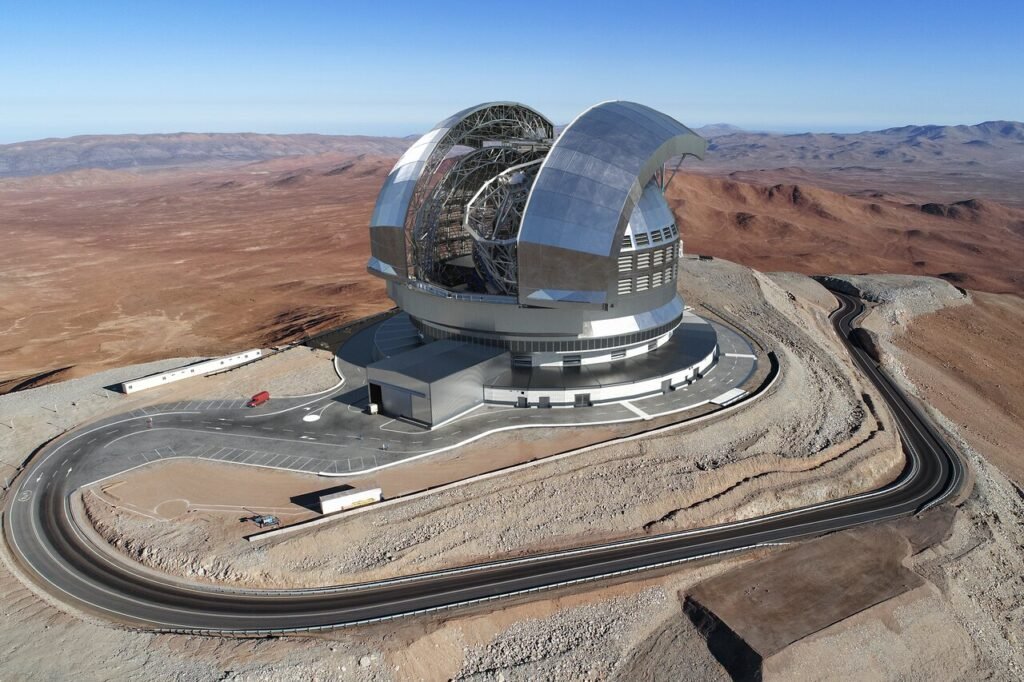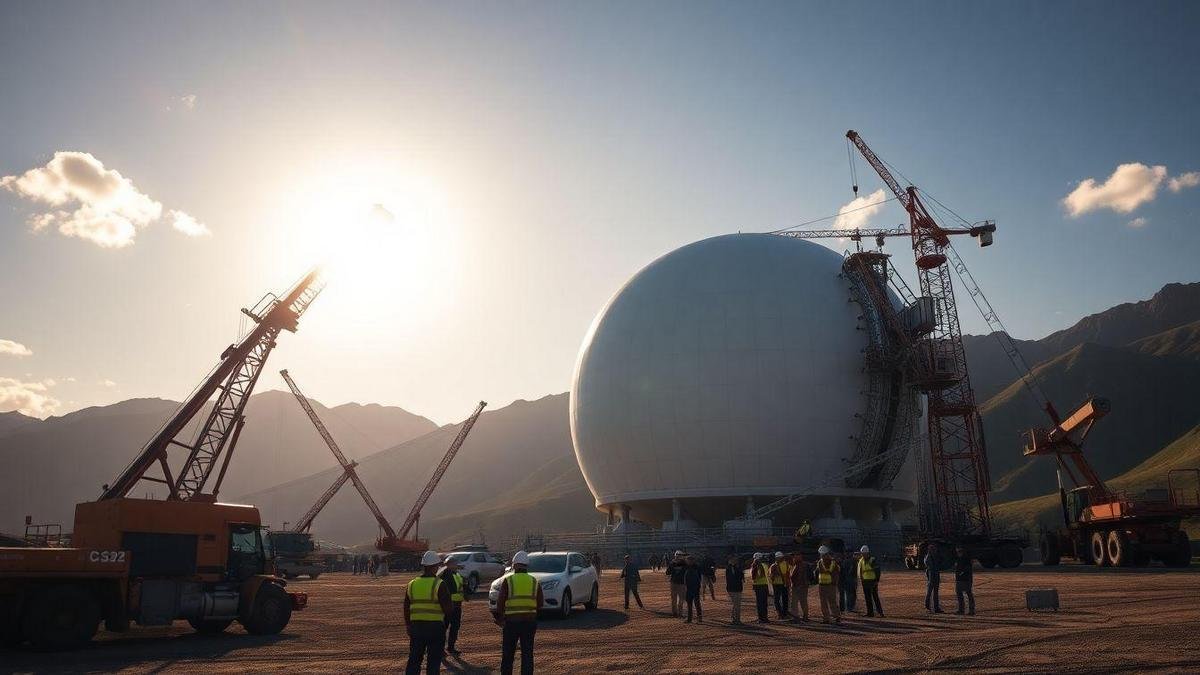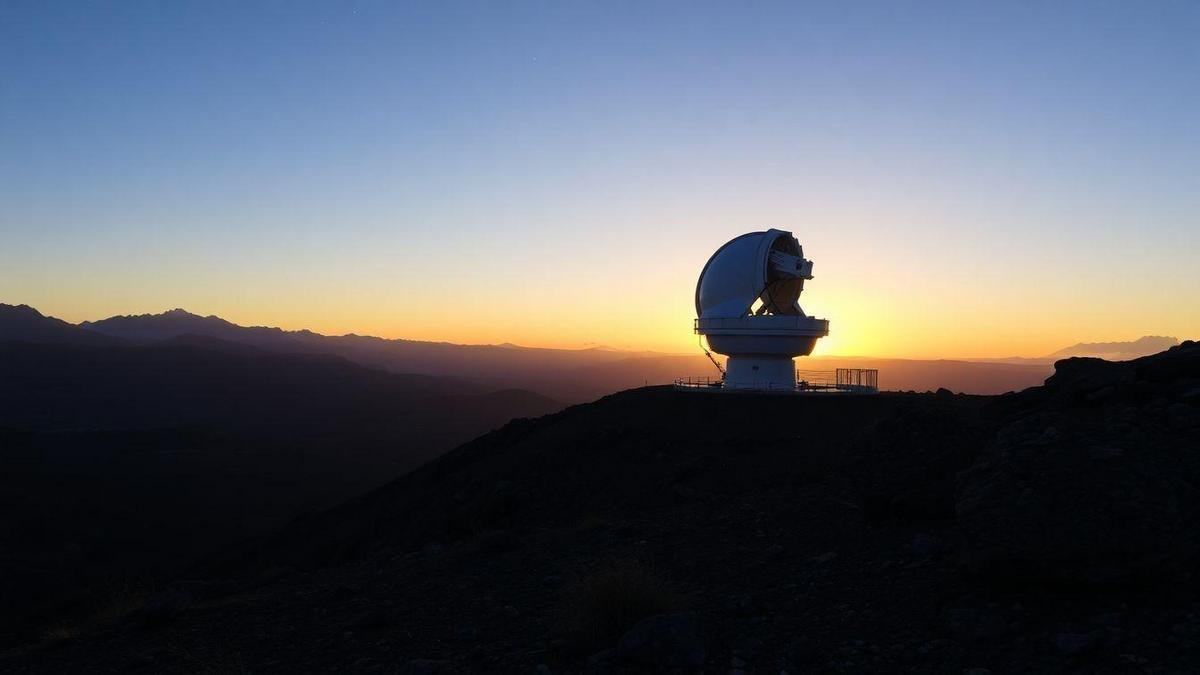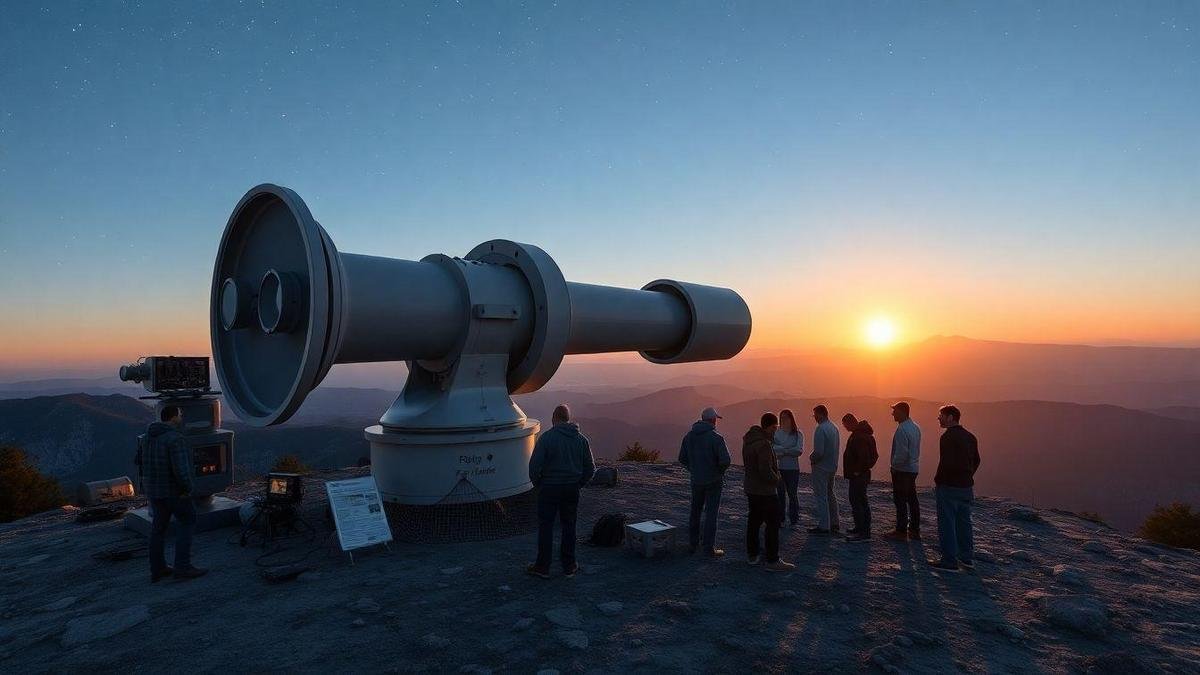
Telescópio are magical tools that help us peek into the vast universe. In this article, we will dive into how these incredible devices have changed our understanding of space and the stars. From discovering new planets to the exciting construction of the world’s largest telescópio in Chile, you’ll learn why telescopes are key players in scientific research. We’ll also explore the cool technology behind these instruments and what the future holds for astronomy. Get ready to see the universe like never before!
Key Insights
- The world’s largest telescópio is being built in Chile.
- This telescópio will help us see faraway stars and galaxies.
- It uses advanced technology for better images.
- Many scientists are excited about this project.
- The telescópio will be ready in the coming years.

The Importance of the Telescópio in Astronomy
How Telescopes Help Us Understand the Universe
Have you ever looked up at the night sky and wondered what’s out there? Telescopes play a huge role in helping us answer that question. They allow us to see distant stars, galaxies, and other celestial bodies that are far beyond our reach. With the help of these powerful tools, we can explore the vastness of space and learn about its secrets.
Imagine peering through a telescópio and spotting a distant star that’s millions of light-years away. It’s like opening a window to another world! Telescopes gather light and magnify it, making faint objects visible. This helps astronomers study the makeup of stars, their life cycles, and even the formation of galaxies.
The Role of Telescopes in Discovering New Planets
Did you know that telescopes have been key in discovering new planets? They help scientists find planets outside our solar system, known as exoplanets. By observing how stars behave, telescopes can reveal the presence of these planets. This is done by measuring the tiny dips in starlight when a planet passes in front of its star.
Here’s a simple breakdown of how this works:
| Step | Description |
|---|---|
| Observation | Telescopes observe stars and their light patterns. |
| Data Collection | They collect data on brightness changes over time. |
| Analysis | Scientists analyze the data to spot potential exoplanets. |
Thanks to telescopes, we now know of thousands of exoplanets, some of which might even be similar to Earth!
Why the Telescópio is Key for Scientific Research
You might be wondering why telescopes are so crucial for research. The answer is simple: they provide essential data that helps us understand our universe better. Without telescopes, many discoveries would remain hidden. They allow scientists to study cosmic events, like supernovae and black holes, which can teach us about the universe’s history.
In short, telescopes are like time machines. They help us look back in time and see how the universe has changed. As new telescopes are built, like the one in Chile, we can expect even more exciting discoveries in the future!

Advancements in Telescópio Technology
What Makes Modern Telescopes Different?
Modern telescopes are a game-changer in the world of astronomy. They aren’t just bigger; they’re smarter! With advanced technology, these instruments can capture light from farther away and provide clearer images than ever before. Here are some key features that set them apart:
- Adaptive Optics: This technology helps correct distortions caused by the Earth’s atmosphere. Imagine peering through a window that constantly clears up fog—this is what adaptive optics does for telescopes!
- Larger Aperture: A bigger opening allows more light to enter, which means you can see fainter objects in the sky. Think of it as using a larger bucket to catch more rainwater!
- Digital Detectors: These replace traditional film and can capture images much faster. It’s like switching from a flip phone to a smartphone—everything is quicker and sharper.
The Impact of Advanced Technology on Observations
Thanks to these advancements, astronomers can observe celestial bodies with incredible detail. For instance, they can study the surface of planets, the composition of distant stars, and even the structure of galaxies. Here’s how this impacts our understanding:
| Observation | Impact |
|---|---|
| Distant Galaxies | We can see how galaxies evolve over billions of years. |
| Exoplanets | We can analyze atmospheres and conditions for life. |
| Black Holes | We can study their formation and effects on surrounding stars. |
How Technology is Changing Astronomy Today
With all this tech, astronomy is like a treasure hunt! You’re not just looking for shiny objects; you’re uncovering mysteries of the universe. For example, the James Webb Space Telescope has already started sending back mind-blowing images that help scientists learn about the early universe.
Moreover, data is being shared instantly across the globe. This collaboration means discoveries are made faster than ever. Imagine being part of a team that solves a puzzle together, each piece coming from different corners of the Earth!

The Construction of the Largest Telescópio in the World
What You Need to Know About the Project in Chile
The construction of the largest telescópio in the world is happening right now in Chile. This project is a big deal for scientists and space lovers alike! The telescópio is called the Giant Magellan Telescope (GMT). It’s being built in the Atacama Desert, which is known for its clear skies. This location is perfect for looking at stars and galaxies.
The project is a collaboration involving several universities and organizations from different countries. They are working together to create something that can help us see deeper into space than ever before.
Key Features of the Largest Telescópio Being Built
The GMT is designed with some amazing features that set it apart from other telescopes. Here are a few key points:
- Seven Mirrors: The telescópio will have seven giant mirrors that work together. This will allow it to collect more light and see fainter objects in space.
- High Resolution: The telescópio will have a resolution that is ten times better than current telescopes. This means you’ll be able to see details that were never visible before.
- Wide Field of View: The GMT will have a wide field of view, allowing it to capture more of the night sky in one glance.
| Feature | Description |
|---|---|
| Number of Mirrors | 7 |
| Resolution | 10x better than current telescopes |
| Field of View | Wide, capturing more of the night sky |
Why This Telescópio Will Change Our Understanding of Space
This telescópio is not just about looking at stars; it’s about changing the way we understand space. With its advanced technology, the GMT will help scientists answer big questions, like:
- What are the mysteries of dark matter?
- How do galaxies form and evolve?
- Are there other planets like ours?
Imagine being able to see the first light of stars that formed billions of years ago! This telescópio will help us peel back the layers of the universe, revealing secrets that have been hidden for ages.

The Benefits of Building a Telescópio in Chile
Why Chile is the Perfect Place for Telescopes
Have you ever wondered why so many telescopes are popping up in Chile? Well, let me tell you, it’s all about the perfect conditions! With its high mountains and remote locations, Chile offers some of the best spots for stargazing. The dry climate means there’s less moisture in the air, which helps keep the skies clear. That’s a big win for astronomers who want to see distant stars and galaxies.
The Advantages of Clear Skies for Observations
Clear skies are a game changer for anyone looking through a telescópio. When the skies are clear, you can see more stars, planets, and other celestial wonders. Here are some of the key benefits of those crystal-clear nights:
- Less Light Pollution: In many areas of Chile, there are fewer city lights. This means you can see the night sky as it was meant to be seen—bright and beautiful.
- Stable Atmosphere: The air is often stable in Chile, which means less twinkling of stars. This stability allows for sharper images through your telescópio.
- Long Observation Times: With many clear nights, you get more chances to observe. You can spend hours gazing at the wonders of the universe without interruption.
How Location Affects Astronomical Research
The location of a telescópio can make all the difference in astronomical research. Here’s how:
| Factor | Impact on Research |
|---|---|
| Altitude | Higher altitudes reduce atmospheric interference, allowing for clearer views. |
| Isolation | Remote locations mean less light pollution, which enhances visibility. |
| Climate | A dry climate leads to fewer clouds and rain, ensuring more clear nights for observation. |
By placing telescopes in these ideal spots, researchers can maximize their chances of making new discoveries. So, if you’re interested in the stars, it’s clear that Chile is the place to be!

The International Collaboration Behind the Telescópio
Countries Involved in the Telescópio Project
The construction of the largest telescópio in the world is no small feat! It takes a global effort, with countries coming together to make it happen. Here’s a quick look at some of the key players involved:
| Country | Role in Project |
|---|---|
| United States | Leading technology development |
| Chile | Hosting the telescópio site |
| Europe | Providing funding and expertise |
| Japan | Contributing advanced optics |
Each country brings its own strengths to the table. For example, the United States is leading the charge in technology, while Chile offers the perfect location for clear skies. Together, they are building something truly remarkable.
The Importance of Teamwork in Scientific Projects
When it comes to science, teamwork is everything! Imagine trying to build a giant puzzle alone—it’s tough, right? Now, think of how much easier it is with friends helping you out. That’s what this telescópio project is all about.
Working together allows for sharing ideas, solving problems, and speeding up progress. Each country involved has its own expertise, and when they combine their knowledge, they can tackle challenges more effectively.
How Global Partnerships Enhance Research Efforts
Global partnerships are like a strong rope made up of many strands. Each strand adds strength and resilience. By pooling resources and knowledge, countries can push the boundaries of what’s possible in research.
Here’s how these partnerships help:
- Diverse Perspectives: Different cultures bring unique ideas to the table.
- Resource Sharing: Countries can share technology and funding, making projects more feasible.
- Faster Solutions: Collaborating means problems can be solved quicker.
In the case of the telescópio, this collaboration is crucial. It’s not just about building a telescópio; it’s about exploring the universe together.

Future of Astronomy with New Telescopes
What Discoveries Can We Expect from New Telescopes?
With the construction of the largest telescópio in the world moving forward in Chile, the excitement in the astronomy community is palpable. You might be wondering, what can we actually expect to discover with this new technology? Well, get ready for some fascinating insights!
- Exoplanets: These are planets outside our solar system. The new telescopes can help us find more of them, and even study their atmospheres. Imagine discovering a planet that could support life!
- Dark Matter: This mysterious substance makes up most of the universe, but we can’t see it. The advanced tools in these telescopes will help scientists understand its role in the cosmos.
- Galaxies: The new telescopes will allow us to see galaxies that are billions of light-years away. This could change our understanding of how galaxies form and evolve.
The Long-Term Goals of Telescópio Projects
The ambitions behind these telescópio projects are grand. Here’s what they aim to achieve in the long run:
| Goal | Description |
|---|---|
| Understanding the Universe | To answer big questions about the universe’s origins. |
| Exploring Life Beyond Earth | To search for signs of life on other planets. |
| Studying Cosmic Events | To observe events like supernovae and black holes. |
These goals show just how much we are striving to deepen our knowledge of the universe.
How New Telescopes Will Shape Our Understanding of the Universe
You might be surprised to learn that these new telescopes will change our view of the universe in ways we can’t even imagine yet. They will give scientists tools to look further back in time than ever before. Think of it as a time machine that lets you peek into the past of our universe.
With better images and data, researchers will be able to make connections that were previously impossible. It’s like putting together a giant puzzle where every piece matters. Each discovery will build on the last, leading to a clearer picture of how everything fits together.
Conclusion
In a nutshell, telescopes are the key to unlocking the mysteries of the universe. They help us peer into the vastness of space, revealing secrets that have been hidden for ages. With advancements in technology, like the Giant Magellan Telescope in Chile, we’re on the brink of groundbreaking discoveries that could change our understanding of everything from exoplanets to dark matter.
So, whether you’re a budding astronomer or just someone who gazes up at the stars in wonder, remember that telescopes are your window to the cosmos. They’re not just tools; they’re time machines that let us explore the history of our universe. Keep your eyes on the skies and stay curious, because the next big discovery could be just around the corner!
If you’re hungry for more cosmic insights, don’t forget to check out more articles at meqviral.com. Happy stargazing!
Frequently asked questions
What is the largest telescópio in the world being built in Chile?
The largest telescópio being built in Chile is the Extremely Large Telescope (ELT).
Why is the location in Chile chosen for the telescópio?
Chile has clear skies and low light pollution. It’s perfect for stargazing and telescópio work!
When will the telescópio be completed?
The ELT is expected to be finished in the mid-2020s.
How will this telescópio help scientists?
It will help scientists study planets, stars, and galaxies better. You’ll get to see things we’ve never seen before!
Can the public visit the telescópio once it’s finished?
Yes! There will be opportunities for tours and public visits. You might even get to see the telescópio in action!